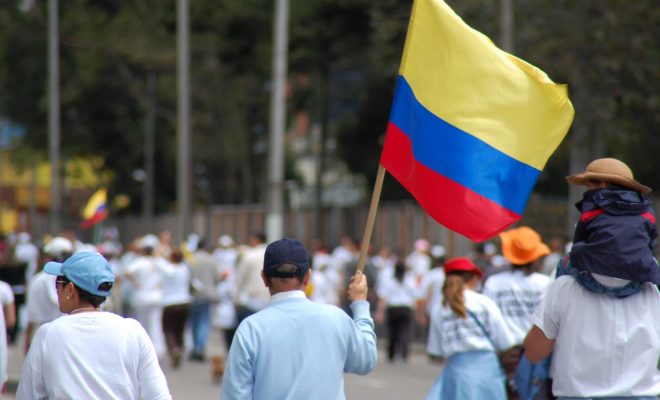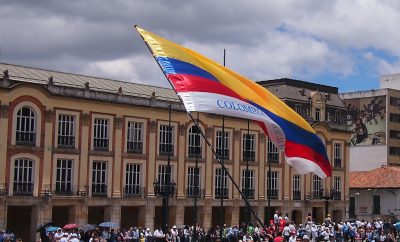 Image Courtesy of [Alejandro Cortes via Flickr]
Image Courtesy of [Alejandro Cortes via Flickr]
World
After a 52 Year Struggle, Colombia May Finally Find Peace
It started as an agricultural commune, keen on equality, in the northwest jungles of Colombia. Government forces broke up the commune, and an armed struggle between Marxist guerrillas and government forces began. Fifty-two years later, the bloody, contentious, and disruptive conflict between the Revolutionary Armed Forces of Colombia (FARC) and the Colombian government will effectively come to an end on Monday, when leaders from both sides sign a peace agreement.
On Monday evening, Juan Manuel Santos, Colombia’s 65-year-old president, and Rodrigo Londoño, the top commander of the FARC, will sign off on the deal that emerged after four years of negotiations. A pen fashioned out of a recycled shell casing will be used to sign the 297-page deal, “to illustrate the transition of bullets into education and future,” according to Santos.
Two thousand five hundred guests will be present at the signing ceremony in the seaside city of Cartagena. Witnesses to the signing include presidents from 15 Latin American nations, U.N. Secretary-General Ban Ki-moon, and U.S. Secretary of State John Kerry. Ban called the peace accord a “new destiny for the nation.”
For decades, Colombia’s destiny was impenetrably bleak. Before the FARC went from a communist peasant revolt to a gun-toting armed guerrilla force, Colombia was a place with rampant inequality fueled by a landowning elite and a power struggle for its prized cocaine fields. In 1964, that inequality sparked a resistance of poor farmers and land workers, who, inspired by the Cuban revolution in the 1950s, set up a farming commune that became known as the Marquetalia Republic. After run-ins with government forces, who felt threatened by the communist fervor bubbling within the Republic, the peaceful struggle turned violent, and the FARC was born.
Since the conflict began in 1964, 220,000 people have been killed, with eight million more displaced from their homes. Human rights groups accuse the FARC of extreme abuses: forcibly recruiting poor farmers and children, extortion, and kidnapping for ransom. Men and women of all ages, including children, comprise the FARC’s ranks, which at its peak in 2002 included 20,000 fighters. A decade-long, U.S.-backed government assault relinquished many of the top rebel commanders and pushed the group to the peripheries of the jungles where they base their operations. The FARC fighting force has dwindled to about 7,000.
Beginning with Monday’s signing ceremony, the country of 49 million people, with Latin America’s fourth largest economy, will likely choose a path toward peace. On October 2, Colombian citizens will vote in a referendum on whether to embrace or reject the accord. Early projections indicate it will easily pass.
The terms of the deal include:
- FARC fighters who submit their weapons and confess to their crimes will avoid jail-time. They will instead be sent to hard hit areas for development work.
- The rebels will be sent to 28 designated zones to turn in their weapons over a six-month period, overseen by U.N. observers.
- The FARC will transition from armed rebel force to a political party.
When the accord was formally reached in late August, both sides expressed hope for a brighter future for their country. “With this accord we will stop being viewed as a dangerous country, and more investment, more tourism, and more employment will come,” said President Santos at the formal announcement of the peace accord.








Comments